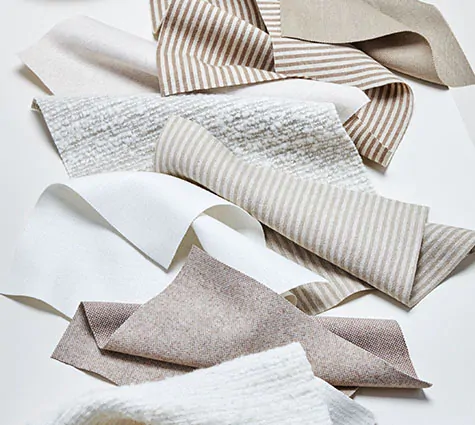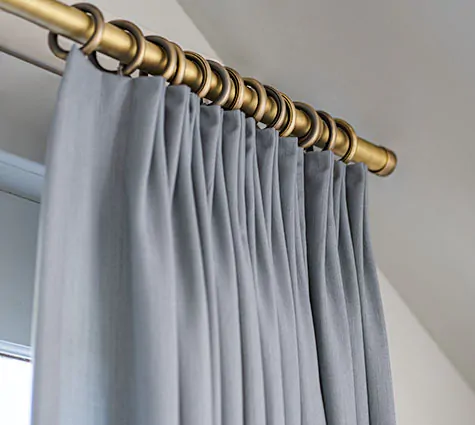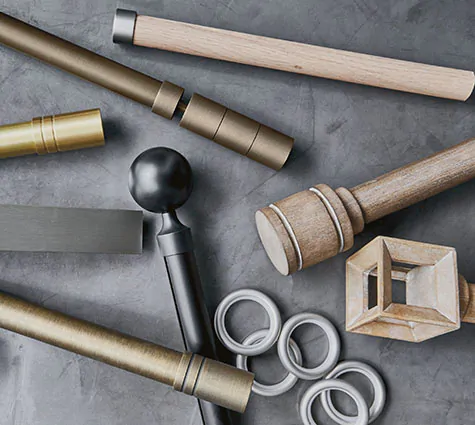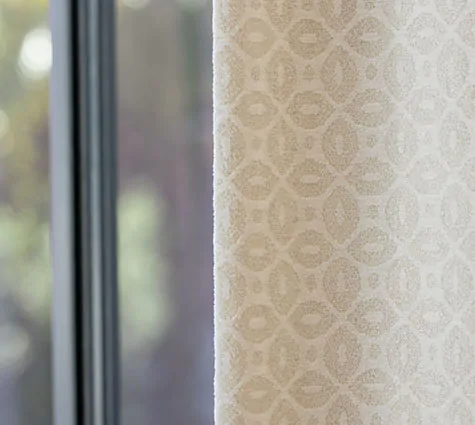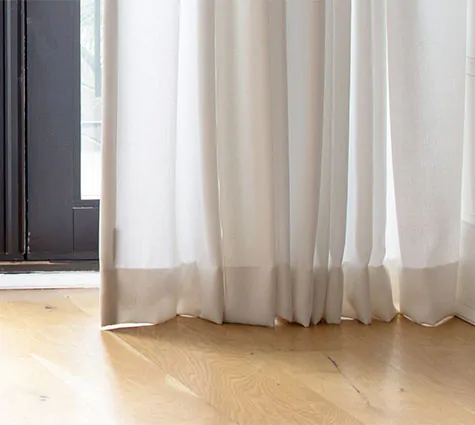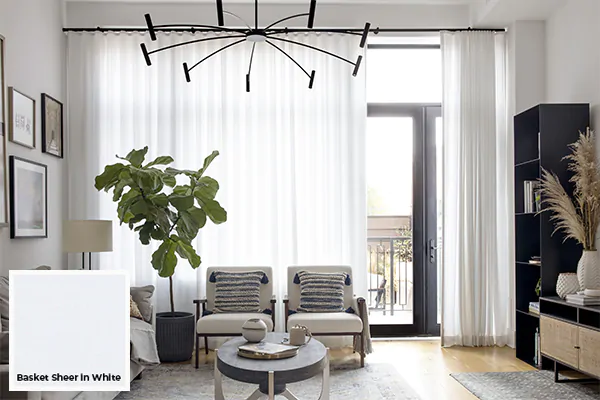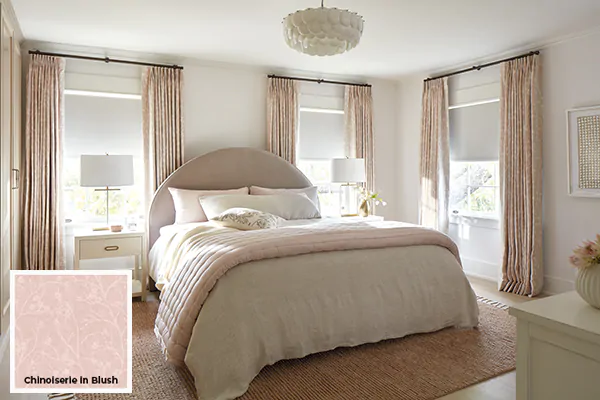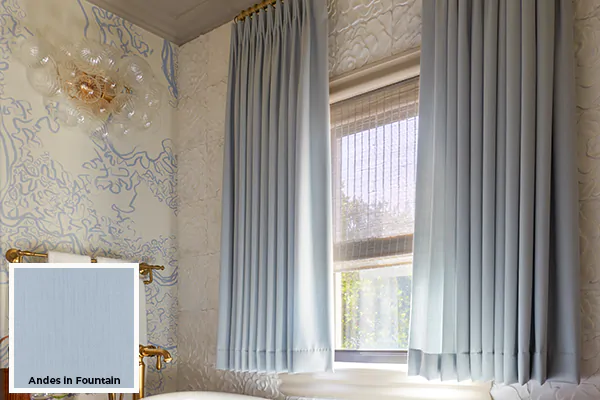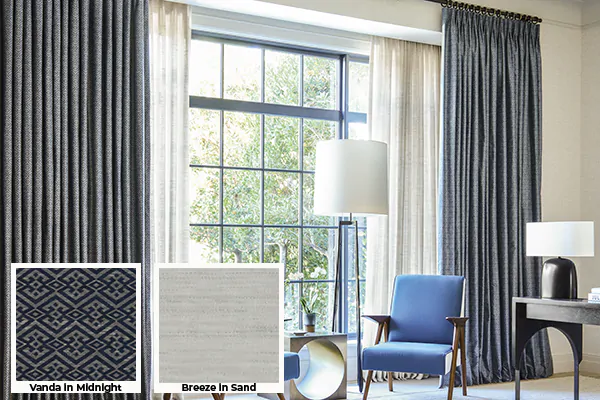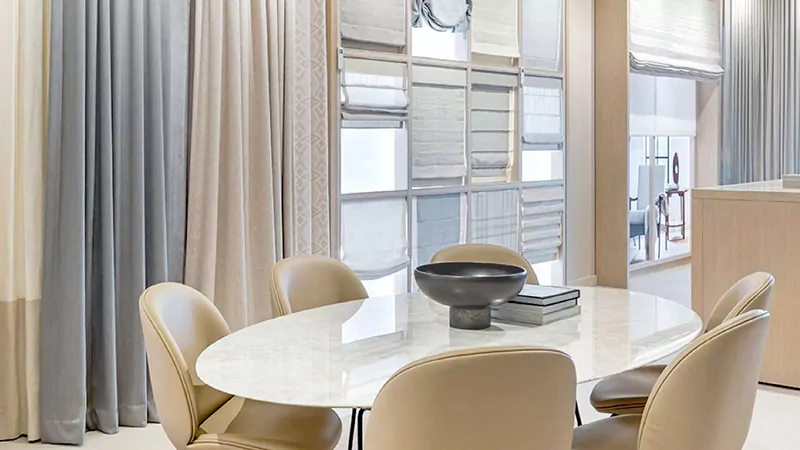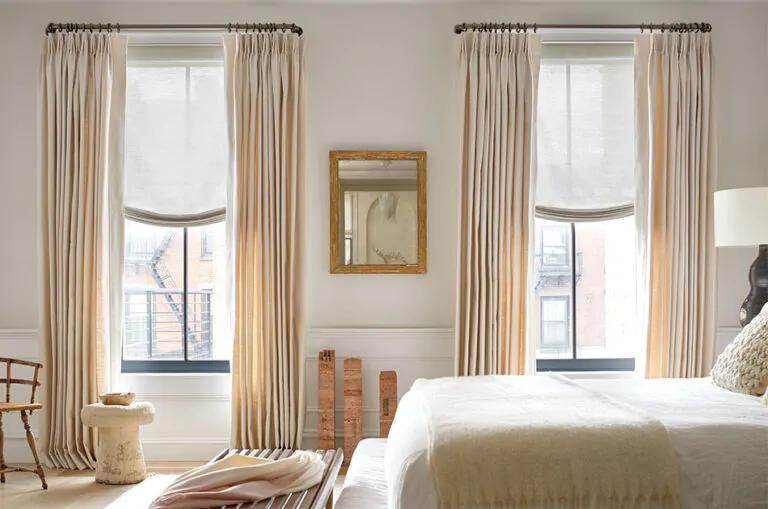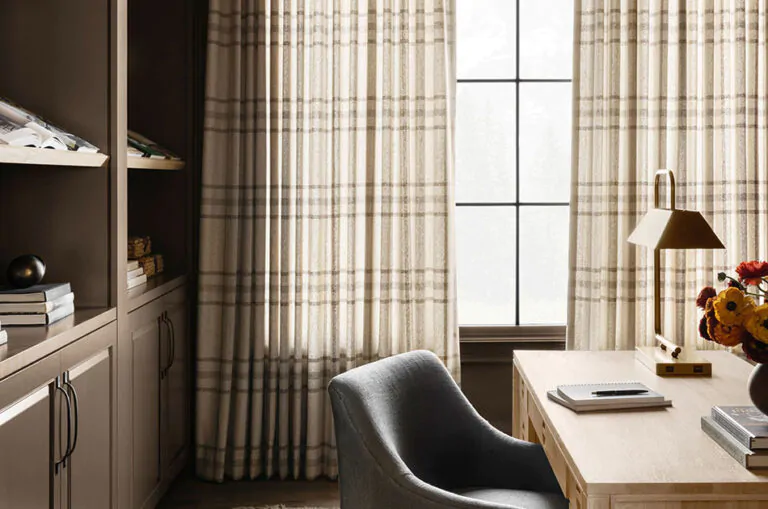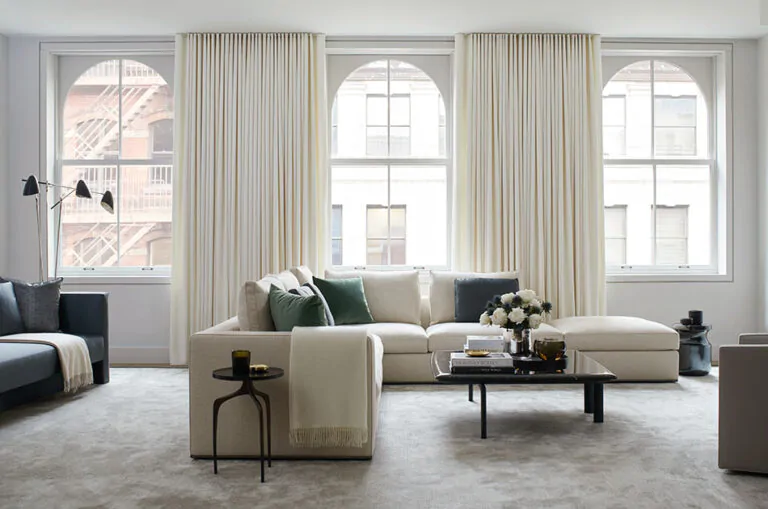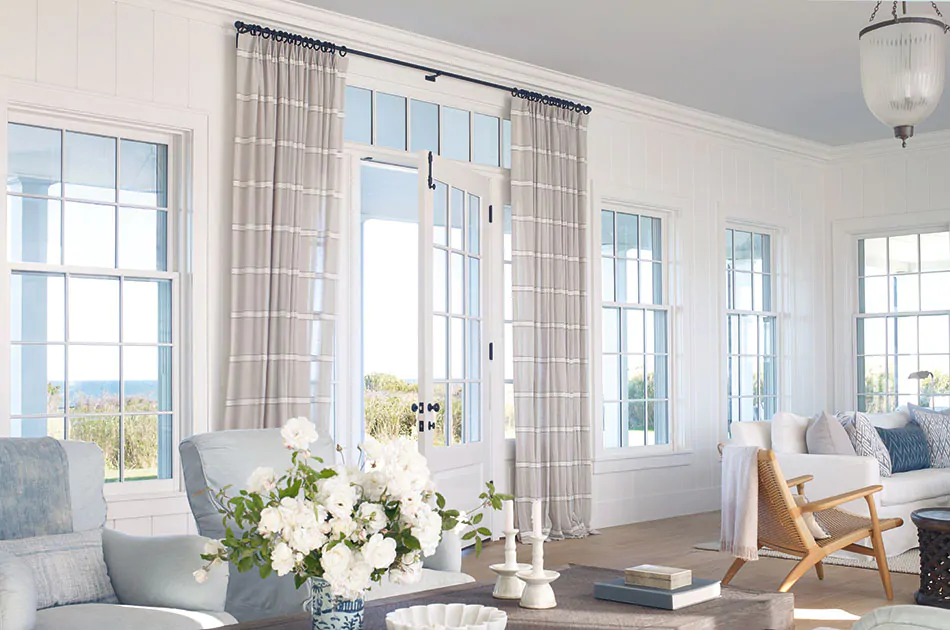
Drapes vs Curtains: Differences & How to Choose
The distinction between drapes vs curtains is slight and the two terms are often used interchangeably — and not incorrectly. Both drapes and curtains refer to panels of fabric that hang from a curtain rod or track system. They come in a variety of pleat styles and share many of the same customization options including fabric selection, lining options, hardware choices and more.
To better understand whether this type of window treatment is right for your space, explore what the differences between curtains vs drapes are, then dive into their many similarities.
Cover photo: Tailored Pleat Drapery, Victoria Hagan Harbor Stripe in Sand, design by Victoria Hagan, photography by William Waldron
considering other window treatments?
Learn the differences between all the main types of window coverings including Drapery, Shades and Blinds in our comprehensive guide. READ THE GUIDE
What’s the Difference Between Drapes vs Curtains?
Historically, the main difference between drapes vs curtains comes down to fabric:
- “Drapes” and “Drapery” have typically been used to refer to thick, long, lined panels of fabric with an elevated, luxe look.
- “Curtains” has typically been used to refer to thinner, unlined fabrics like sheers as well as shorter, less formal panels like café curtains.
Learn more about each term through the lens of several factors so you can get a better understanding of your options.
Understanding Drapery
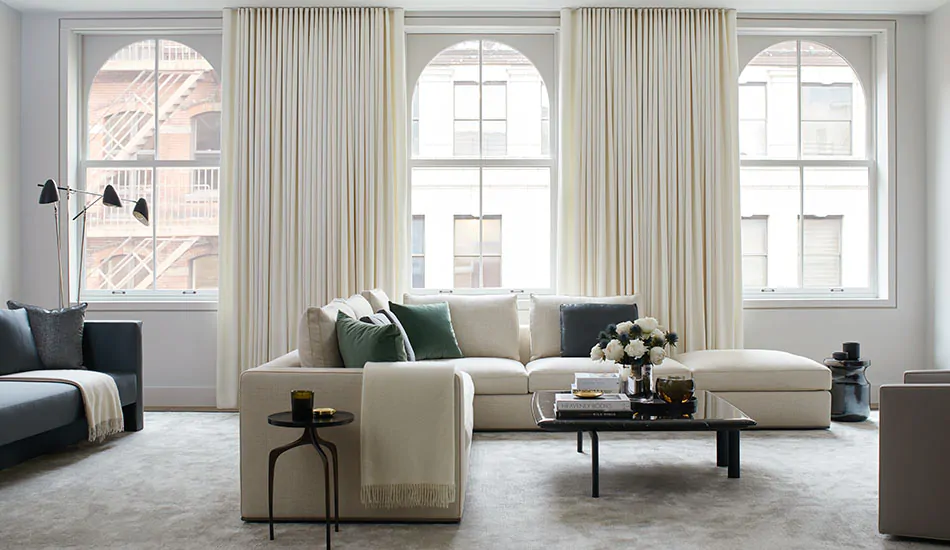
Get a deeper understanding of drapery through the following factors:
- Fabric: Between drapes vs curtains, drapes typically feature thicker, higher-end fabrics like velvet, silk or wool.
- Length: Drapery extends all the way to floor, or beyond, with break- and puddle-length options.
- Lining & Fullness: Drapery almost always features lining in addition to thick fabrics, so your drape panels look lush and full — and provide excellent light blocking, privacy control and insulation.
- Functionality: Thanks to their thicker panels, drapes are best in rooms where a room darkening effect and privacy are essential, such as bedrooms, living rooms and media rooms. Their insulation also makes them ideal for rooms with a draft since they’ll help to block the cold air and keep your room more comfortable.
- Aesthetics: In comparing drapes vs curtains, drapery is typically considered to be the more formal option, thanks to its higher-end materials and lush fullness.
Understanding Curtains
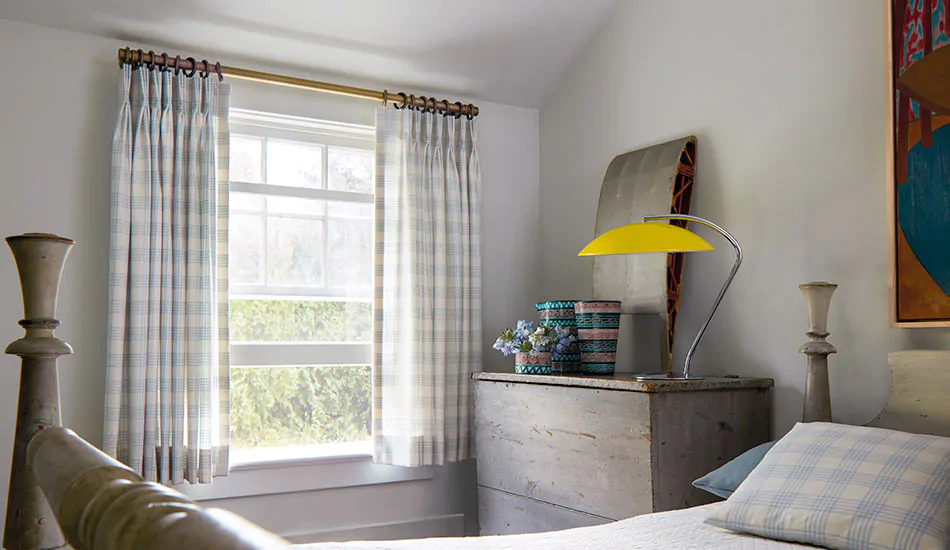
Learn more about the classic definition of curtains through the following factors:
- Fabric: Between curtains vs drapes, curtains are typically made from thinner, often sheer, fabrics like linen, cotton or synthetic blends like polyester.
- Length: There is no standard length for curtains. They can be short, like café curtains and sill-length curtains, or floor-length. However, they typically do not puddle on the floor like Drapery.
- Lining & Fullness: Curtain fabrics are light and unlined, so they don’t have much fullness to them.
- Functionality: Thanks to their lighter, sheer materials, curtains offer a little bit of privacy while still letting natural light and a gentle breeze into your room.
- Aesthetics: Between curtains vs drapes, curtains are considered less formal. Their sheer panels offer a casual, breezy charm to any room.
Drapes vs Curtains at The Shade Store
While the terms “drapes” and “curtains” can be used to refer to slightly different styles of window treatments, they are more often used interchangeably. The Shade Store offers custom-made Drapery that can be made from a wide variety of fabric and be cut to any length you desire. So, we use the terms “drapes” and “curtains” interchangeably since our product offering encompasses styles, fabrics and lengths that suit the classic definitions of both.
Customization Similarities Between Curtains & Drapes
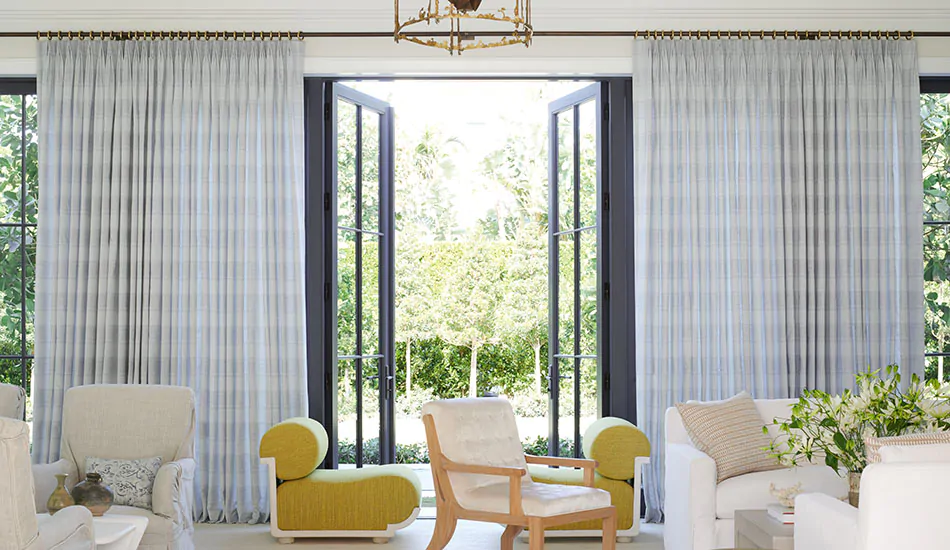
Between curtains vs drapes, the two terms are used interchangeably as they feature many of the same customization options. When choosing between drapes vs curtains, it’s less about choosing between one or the other and more about choosing the customizations that best fit your needs. Your preferred selections of fabric, pleat style, hardware, lining and length will ultimately determine whether curtains or drapes are best for your space.
Customizations that will determine between drapes vs curtains for your space include:
How to Choose Between Curtains vs Drapes
Now that you know the customization options between curtains vs drapes, learn about factors to consider to help you decide on the right selections for your particular project.
Factors to consider include:
Type of Room & Functionality
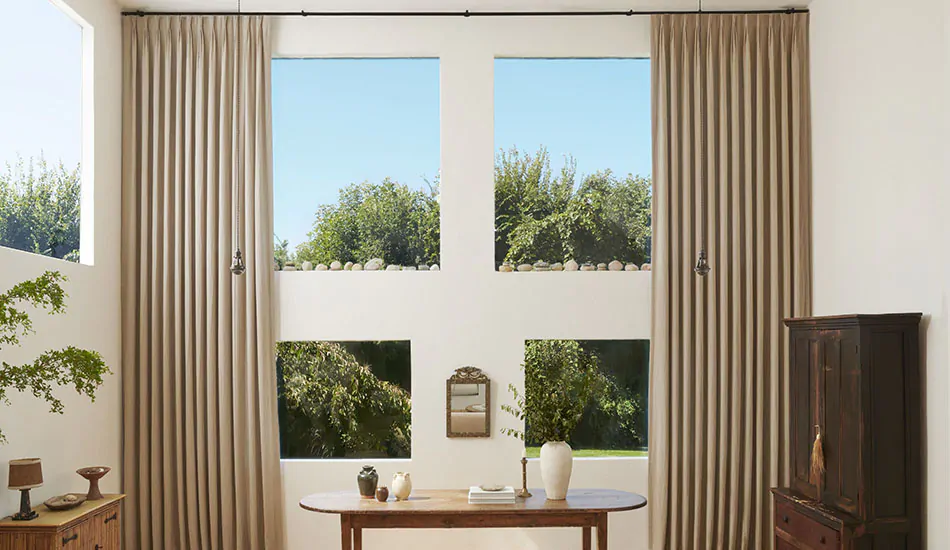
When thinking about the type of room, it’s best to think about it in terms of its functionality. What do you plan on doing in the room, and between drapes vs curtains, which is more appropriate for the space? A kitchen, for instance, is a place full of activity with lots of potential for sprays and spills from the sink, countertops where you prep food and table where you eat. In this case, long, luscious drapery is likely not ideal. Instead, short café curtains or sill-length curtains are a great choice as the short panels will stay out of the way of your dishwashing, food prepping and meals.
On the other hand, a formal living room where you entertain family and friends and feature your best furniture and décor will likely benefit most from thick, tall drapery. The luscious, lined panels will suit the formal aesthetic while also providing needed privacy and excellent light control to protect your furnishings from the sun’s harmful rays.
Light & Privacy Needs
Light and privacy needs tie closely into the type of room and how you’ll use it. For instance, a bedroom requires a room darkening effect for better sleep and excellent privacy, so blackout-lined drapery is ideal. On the other hand, a sunroom with lots of natural light may require minimal privacy, so sheer curtains that soften the light and allow a gentle breeze will be perfect.
Insulation Needs
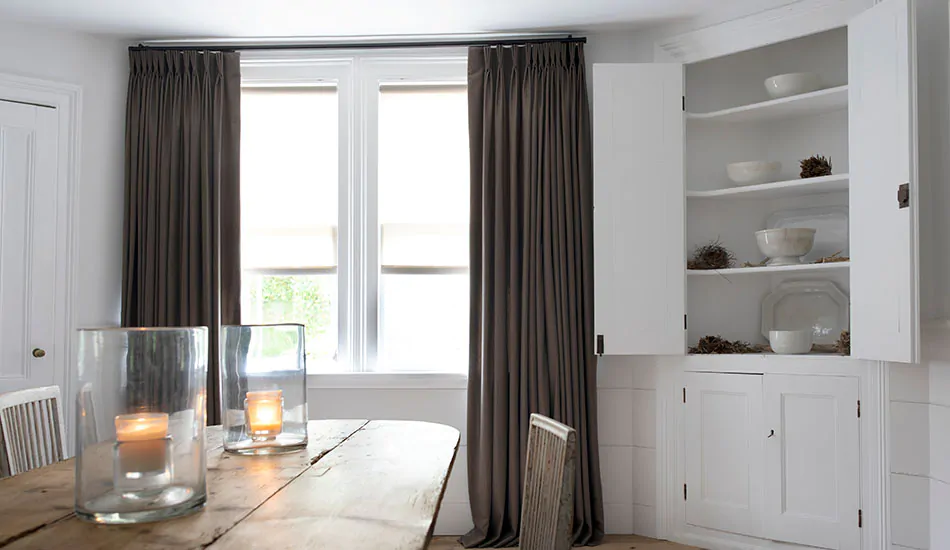
When comparing drapes vs curtains in terms of insulation needs, drapes are almost always the better choice as the thick, lined floor-length panels help trap cold air at the window so your room stays more temperate. Drape panels are also great for blocking the sun in warmer climates, so that your room stays cooler during the hottest times of day.
Existing Aesthetic & Décor
When deciding between drapes vs curtains, it’s also important to consider your existing décor. Your choice in drape or curtain fabric, hardware and pleat style should all complement your space in terms of formality, color scheme, textures, patterns and more. For instance, light, airy curtains may look out of place in a formal dining room with dark colors and visually heavy furniture, while thick, lush drapes will look out of place in a bright, airy breakfast nook.
Inspiration for Drapes & Curtains
See how all the factors above come together in curated spaces featuring drapes and curtains.
Dive Deeper Into Drape & Curtain Options
With a clearer understanding of the differences and similarities between drapes vs curtains, as well as inspiring examples of each, you’re ready to start making your own selections. Visit a showroom to experience all the options available to you in terms of pleat style, hardware, lining, fabric and more. Plus, you’ll meet our dedicated Design Consultants who can answer your questions and help you decide on the right selections for your space.
